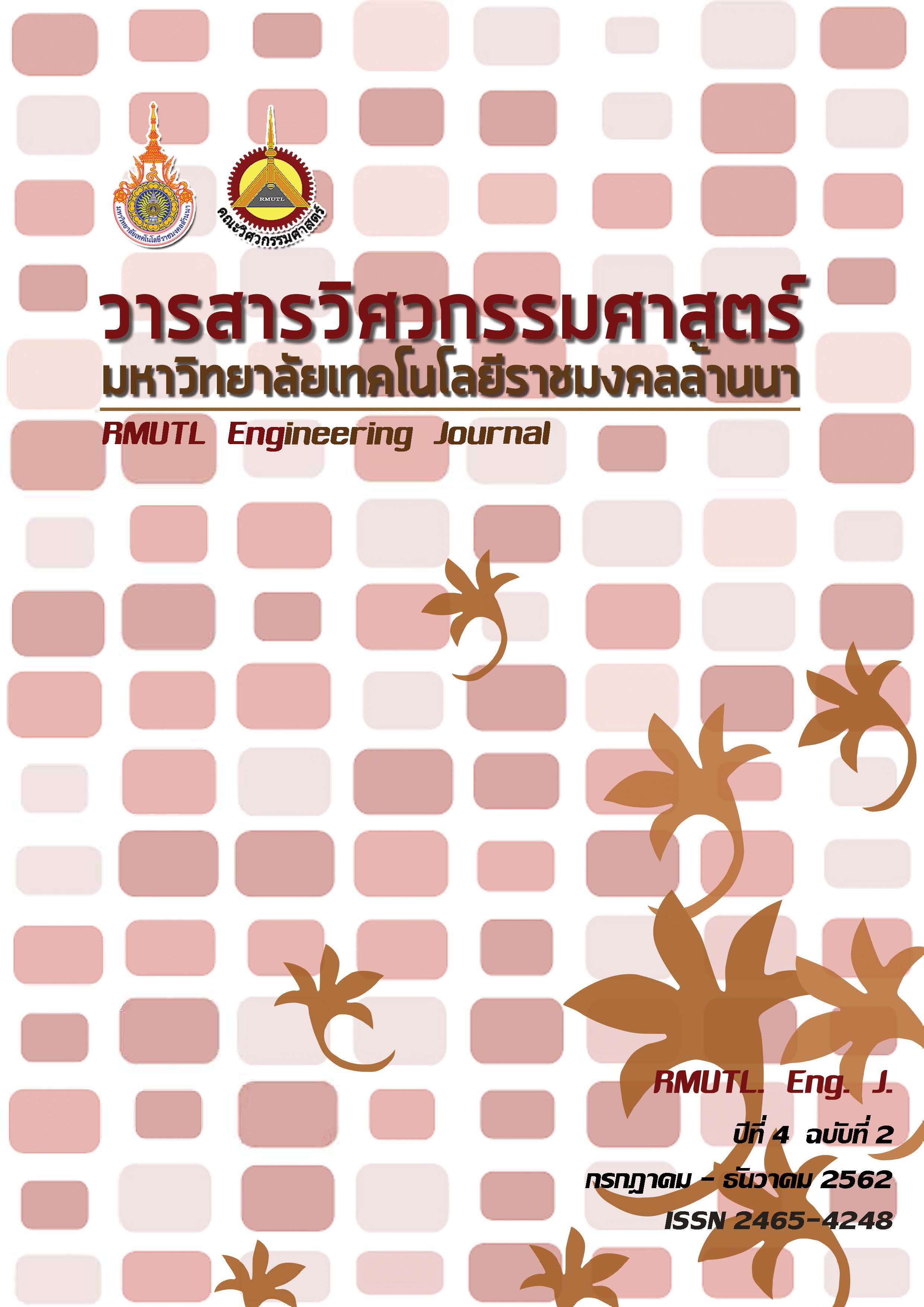The Study of Laterite Colour from Using Iron Ore Tailing Substitute Fine Aggregate
Keywords:
laterite, iron ore, iron tailing, fine aggregateAbstract
The main objective of this study was to utilise iron ore tailing from Phu-Ang source, Loei as a laterite colour. It was used to substitute the fine aggregate with -30+200 Mesh sieved size. It was found that the colour in CIE L*a*b* colour system was nearly identical to the natural laterite from Li source, Lamphun. With this, iron ore tailing could be replaced fine aggregate in the forms of a natural red colour as compared to a laterite colour. Besides, the labor cost could be saved, shortly white-wash time, and cheap material cost. However, the disadvantages were the high density mixture, ore resource distance, and the colour changing caused by the oxidized time in the ambient air
References
2. Kasthurba AK, Santhanam M, Mathews MS. Investigation of laterite stones for building purpose from Malabar region, Kerala state, SW India–Part 1: Field studies and profile characterisation. Construction and Building Materials. 2007 Jan 1;21(1); p. 73-82
3. Pace D. Karaba Brick Quarry - Video interview with David Pace | LensCulture [Internet].LensCulture. 2019 [cited 10 July 2019]. Available from: https://www.lensculture.com/articles/david-pace-karaba-brick-quarry
4. Saeed KA, Kassim KA, Nur H, Yunus NZ. Strength of lime-cement stabilized tropical lateritic clay contaminated by heavy metals. KSCE Journal of Civil Engineering. 2015 May 1;19(4); p. 887-92
5. Latifi N, Marto A, Eisazadeh A. Structural characteristics of laterite soil treated by SH-85 and TX-85 (non-traditional) stabilizers. EJGE. 2013;18; p. 1707-18
6. X-Rite Incorporated ©. 2016. A Guide to Understanding Color Communication. [cited 24 July 2019]. Available from: https://www.xrite.com/-/media/xrite/files/whitepaper_pdfs/l10-001_a_guide_to_understanding_color_communication/l10-001_understand_color_en.pdf
7. R.W.G.Hunt, M.R. Pointer. Measuring Colour, 4th ed. John Wiley & Sons Ltd. 2011; p. 55-60
8. ศรัณย์ธรรม์ ภูริจารุยางกูร. การตรวจวิเคราะห์ดินโดย วิธี FTIR และการวัดสีดิน.วิทยาศาสตร์ มหาวิทยาลัยศิลปากร, 2559
9. C. Mish F. Merriam-Webster's Collegiate Dictionary. 10th ed. Springfield, MA: Merriam-Webster, Inc; 1994
10. Levin N, Ben‐Dor E, Singer A. A digital camera as a tool to measure colour indices and related properties of sandy soils in semi‐arid environments. International Journal of Remote Sensing. 2005 Dec 20;26(24); p. 5475-92
11. Streltsova TP, Lesovik VS, Frolova MA, Perkova MV, Belikov DA. Natural iron oxide pigments for the construction industry. World Applied Sciences Journal. 2013;25(2); p.193-201
12. ASTM C. 125 Standard terminology relating to concrete and concrete aggregates. Annual Book of Standards. Volume 04.02, 2003
13. Rockwell N. Prehistory - Illustration History [Internet]. Illustrationhistory.org. 2018 [cited 11 July2019].Available from: https://www.illustrationhistory.org/history/time-eriods/prehistory










